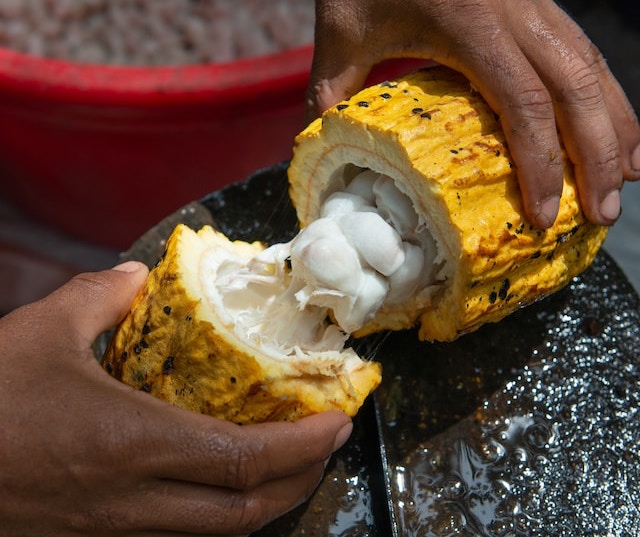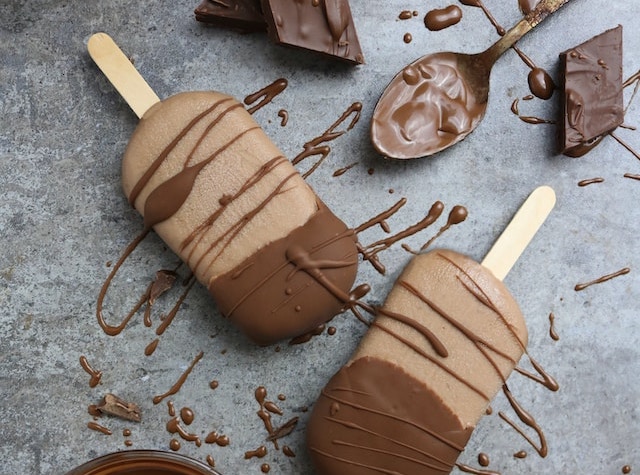Photo by Tetiana Bykovets on Unsplash
Who doesn’t love chocolate? Well, maybe someone does, but it’s a rarity. Chocolate is one of the most popular and delicious treats in the world. But have you ever wondered where it comes from or how it’s made? To make you an expert, we’ll tell you a bit of the history of chocolate, its production process, the biggest producers, and tips on how to best enjoy it.
Today’s Focus of Attention is reader-supported. We sometimes include products we think are useful for our readers. If you buy through links on this page, we may earn a small commission.
A Brief History of Chocolate

Chocolate comes from the seeds of the cacao tree, which grows in tropical regions around the globe.
It has been consumed since at least the Olmec civilisation in Mesoamerica, dating back to the 19th–11th centuries BCE. The Mayans and Aztecs also enjoyed chocolate beverages before European contact.
Christopher Columbus encountered cacao beans during his fourth mission to the Americas and introduced them to Spain. Nevertheless, chocolate didn’t gain traction in Europe until Spanish friars presented it to the Spanish court.
Initially consumed as a beverage, the Spanish added sugar and honey to counter its natural bitterness. By the 17th century, chocolate had become a European staple.

Major Producers of Chocolate Worldwide

Today, West African countries, particularly Ivory Coast (Cote d’Ivoire) and Ghana, dominate cacao production, followed by Indonesia, Nigeria, and Ecuador.
Cameroon, Brazil, Mexico, Peru, and Dominican Republic are as well part of this exclusive club, accounting for over 80% of the world’s cacao harvest.
The largest chocolate company is the American Mars Wrigley Confectionery, which produces some of the most commercial brands, including M&M’s, Snickers, and Twix.
The second biggest in terms of revenue is Ferrero Group, known for Nutella, Ferrero Rocher, and Kinder. Other big names include Mondelez International, Hershey Company, Nestle, and Barry Callebaut.

How is Chocolate Made?


Step 1: Harvesting
The first step in chocolate-making involves hand-harvesting the cacao pods, the fruits of the cacao tree. Workers use machetes or knives to cut them from the branches. Each pod has around 40 beans, surrounded by a white pulp. The pods are then opened, and the beans and pulp are scooped out and placed in baskets.
Step 2: Fermenting
Fermentation is key for developing the chocolate’s flavour and aroma. This natural process includes microorganisms such as yeast and bacteria breaking down the sugars and acids in the pulp. The fermentation lasts about a week and takes place in wooden boxes, baskets, or heaps covered with banana leaves. During this stage, the beans turn from white to brown and develop a fruity smell.

Step 3: Drying
After fermentation, the cacao beans are dried to reduce moisture and prevent mould growth. This is usually done by spreading the beans on large trays or mats under the sun or artificial heat sources, such as ovens or dryers. The procedure can take several days, depending on the weather. To ensure even drying, the beans are stirred or turned regularly. Once dried, they are sorted, graded, and packed for transport and storage.
Step 4: Roasting
Roasting the cacao beans further enhances their flavour and aroma. The beans are poured into vast rotating drums at temperatures ranging from 120°C to 150°C for 10 to 40 minutes, depending on the desired outcome. At the same time, this method serves to kill any remaining bacteria, reduce acidity, and loosen the bean shells.
Step 5: Cracking and Winnowing
After roasting, the cacao beans are cracked into small pieces called nibs. The shells are removed by blowing air over them or using sieves, a technique known as winnowing. This results in pure cacao nibs ready for grinding.
Step 6: Grinding
The cacao nibs are ground into a smooth paste named cocoa mass or cocoa liquor. This is achieved with stone mills, metal rollers, or electric grinders. The friction and heat produced during grinding melt the cocoa butter in the nibs, and create a liquid mixture of cocoa solids and cocoa butter. Cocoa liquor is used to make chocolate bars or is further processed into cocoa powder and cocoa butter.
Step 7: Conching
Conching involves mixing and stirring the cocoa liquor for several hours or even days to improve its texture, flavour, and aroma. Machines known as ‘conches’ with large metal blades or rollers agitate the liquor. The procedure reduces the bitterness, acidity, and moisture while developing a smooth, velvety consistency.
Step 8: Tempering
Tempering requires heating and cooling the chocolate to form stable crystals of cocoa butter. This is crucial for creating shiny, smooth, and crisp chocolate bars. Machines called ‘temperers’ prevent blooming, a whitish coating that appears on poorly tempered chocolate due to fat or sugar crystals rising to the surface.
Step 9: Moulding
The tempered chocolate is poured or injected into moulds with cavities of different forms, such as bars, pralines, truffles, etc. The containers are then cooled until the chocolate hardens and contracts from the mould walls. Following this, the products are removed from the moulds and packaged for sale.

How to Enjoy Chocolate

Now that you’re well-versed in the chocolate-making process, here are some tips on how to savour it:
- Break a small piece of chocolate and look at its colour, shine, and surface. High-quality chocolate should have a uniform and glossy appearance with no cracks or bubbles.
- Choose first-class chocolate with a high percentage of cocoa solids (at least 70% for dark chocolate) and minimal ingredients.
- Avoid chocolates with vegetable oils, artificial flavours, or preservatives.
- Store chocolate in a cool, dry, and dark place away from heat, moisture, and strong odours.
- Don’t freeze chocolate unless absolutely necessary, as this may affect its texture and flavour.



